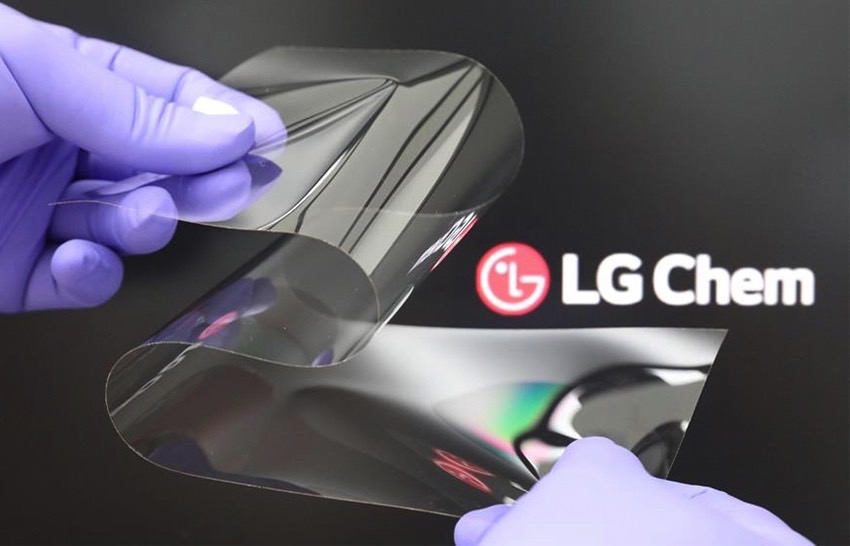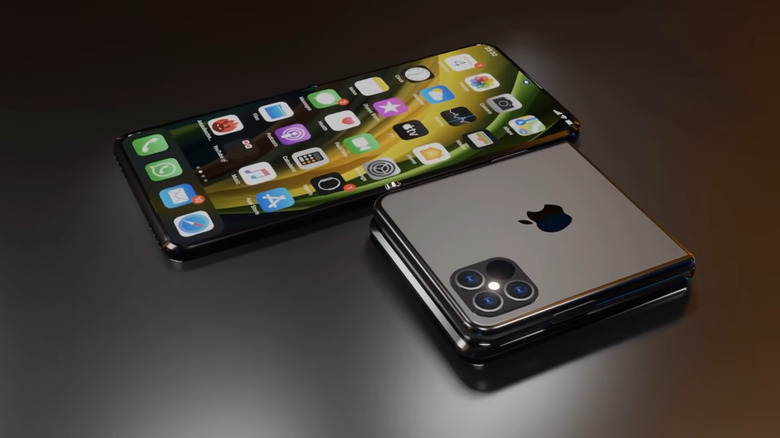Is This The New Tech That'll Make Apple's Foldable iPhone A Reality?
Apple's iPhone 13 will be unveiled on September 14th, with the Cupertino-based company having just confirmed the launch rumors earlier this week. We're looking at four iPhone 13 versions, the descendants of last year's four iPhone 12 devices. The handsets will have almost the same design as their predecessors, aside from a narrower notch and new rear cameras. Apple isn't ready to challenge its rivals with a new form factor like a foldable iPhone. But such a device is already in the works and could hit stores in the coming years. That's according to various rumors that offer new details about Apple's foldable iPhone initiative every once in a while. Separately, we see new tech developments that Apple could benefit from, and the latest one comes from LG.
Samsung foldable tech
Samsung is at the forefront of foldable smartphone development, and the company is eager to grab as much of the market as possible. The Galaxy Z Fold 3 and Flip 3 are the best and most affordable handsets made to date. They also feature the best build quality so far, offering buyers plenty of durability improvements over previous models. In other words, Samsung has been looking to fix two of the main concerns about foldable handsets — fragility and cost.
Rumors already say that Samsung is willing to capitalize on its foldable phone tech by selling key components to other phone vendors. Considering that Apple is already a major Samsung customer, the foldable iPhone might be in Samsung's crosshairs.
Samsung's new Fold and Flip phones have a more durable aluminum frame, Corning Gorilla Victus Glass on the back and external screens, water-resistance, and an Ultra Thin Glass (UTG) panel that's 80% more durable than before. That last one is a key component that we might see on other foldable phones this year, including Google's first Pixel Fold. But there's not going to be a foldable iPhone in stores this year. Samsung can't yet sell any of its foldable OLED screens or UTG panels to Apple. Previous rumors did say that Apple is testing flexible OLED screens from Samsung, however.
But Apple is working with more than one Korean supplier when it comes to essential foldable iPhone parts. A mid-February report said Apple is working with LG Display on an OLED panel for the foldable iPhone.
Will the foldable iPhone use LG’s Real Folding Window?
LG retired from the smartphone business earlier this year, months before the expected launch of its exciting Rollable handset. LG has never made a foldable phone of its own. But the company won't stop mass-producing components for other vendors.
That's where the Real Folding Window (RFW) screen tech comes into the picture. LG announced the new product on Wednesday. We're looking at a transparent plastic panel that's foldable and is supposed to be as thin as glass. The RFW screen is equivalent to Samsung's UTG tech, aiming to solve the fragility problem.
"Unlike existing polyimide films and tempered glass-type materials, the cover window that applied LG Chem's new coating technologies will maximize flexibility, while also providing optimized solutions for foldable phones," an LG Chem speaker said. The person added that the RFW screen would also make "improvements to chronic issues like fold impressions on the connecting part of the screen."
Most foldable phones use polyimide films on top of the OLED panels. Even the Fold 3 and Flip 3 have a plastic film on top of the UTG panel.

LG's new Real Folding Window foldable screen cover.
How the Real Folding Window cover works
There's no telling whether the foldable iPhone will feature an RFW or UTG screen cover. Apple could always develop its own panel that goes on top of the foldable OLED screen. And Corning is developing foldable glass for future devices.
LG's Real Folding Window cover features a special coating on both sides of a PET film. The new material has a thickness of only a few dozen micrometers (μm). Applied on top and bottom of the plastic, the material should improve heat resistance and mechanical properties, LG explains.
The RFW is thinner than tempered glass but has the same hardness. The durable RFW screens will also feature competitive prices compared to polyimide film. The LG screen covers can be folded more than 200,000 times, the company says. Best of all, the crease that appears in the hinge section of a foldable glass shouldn't be as visible.
Finally, the RFW panels would also be suitable for smartphone designs that feature the main foldable screen on the exterior. The Fold 3 and Flip 3 have in-folding foldable displays. It's unclear at this time which sort of foldable iPhone design Apple would go for.
When will the foldable iPhone launch?
LG also said it's developing RFW displays that only feature the coating without the PET film intermediary. The Korean giant will start preparing for mass production next year and begin full-scale sales of RFW panels in 2023. As expected, LG has not named any of the potential customers interested in RFW panels for foldable handsets. "We will strengthen our partnerships with leading companies of the smartphone industry and expand our market starting with mobiles and going on to new foldable applications such as laptops and tablets," LG Vice President Chang Do Ki said in a statement.
But it so happens that iPhone rumors say Apple could launch its first foldable handset as soon as 2023. That's not a confirmation that LG's new Real Folding Window screen cover will equip the Apple foldable phones. But it sure looks like LG is lining up the technology required to supply key foldable components to interested players.
Also, the iPhone maker isn't the only company working on new foldable phones. LG Chem will likely pitch its RFW tech to other parties, including vendors that might go for Samsung's UTG tech this year.
